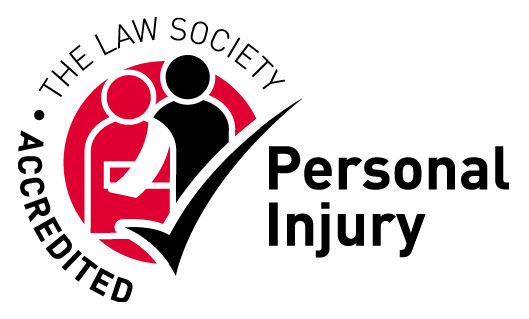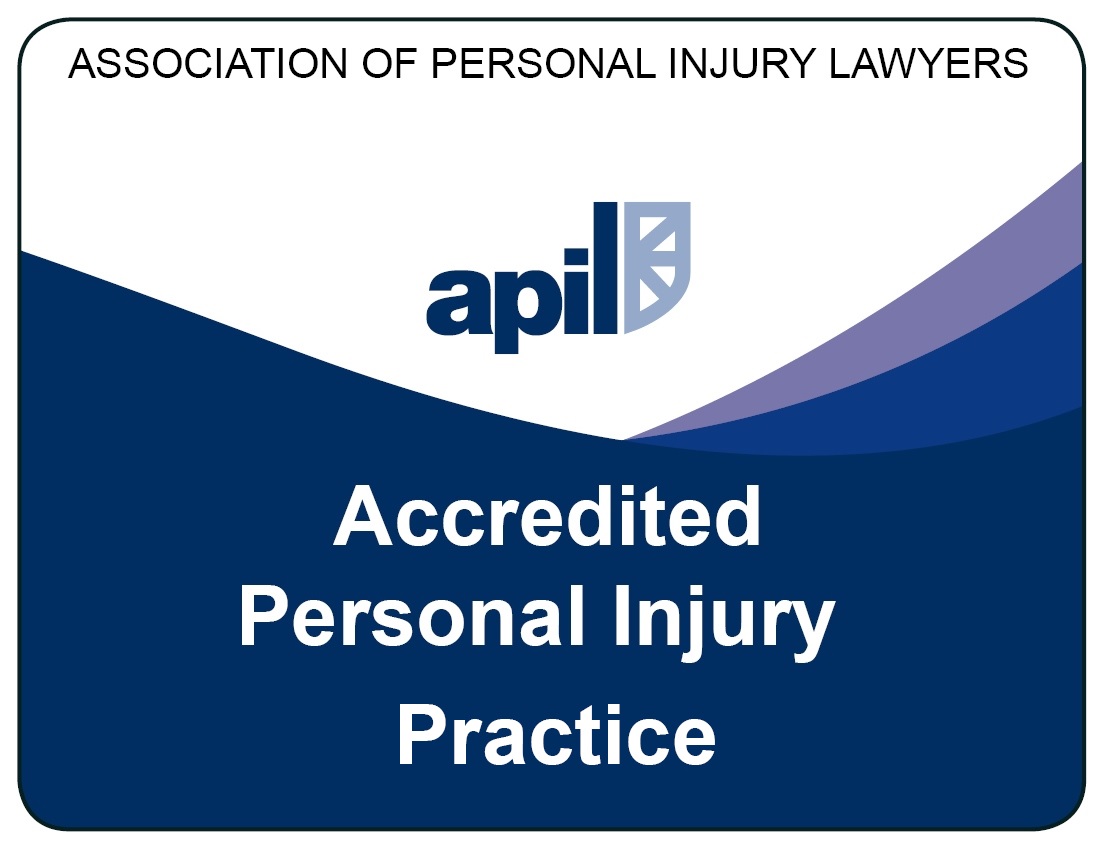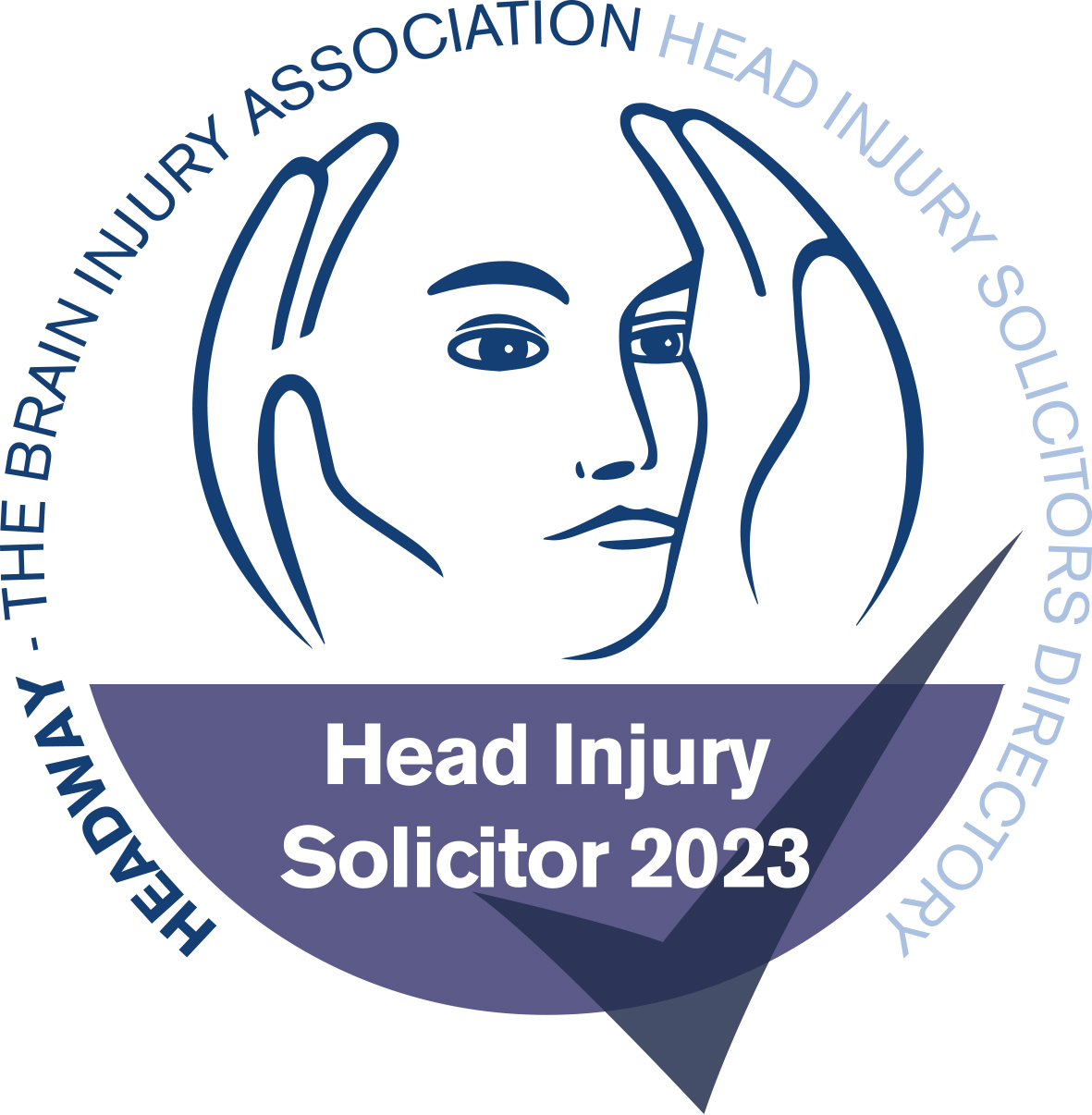



Spinal Cord Injury Claims
If you or a loved one have suffered a major spinal injury in an accident that was not your fault, you could be entitled to compensation. Talk to us today about spinal cord injury claims.
At Jefferies, our expert team is here to help you and your family to secure a settlement to help cover the cost of specialist therapy, adaptations to your home, transport, or other assistance. Call us today for a confidential conversation about your circumstances.
CONTACT OUR EXPERTS TODAYSpinal Cord Injury Claims
Our experienced serious injury solicitors, know that spinal cord injuries can have long-term or even life-long consequences. Depending on the severity of the injury, back problems can lead to paralysis. In these cases, compensation is required to cover not only pain and suffering but also permanent care or mobility facilities. Talk to the experts at Jefferies Solicitors today on 0800 342 3206 to discuss your circumstances and find out if you have grounds to make a spinal cord injury claim.
SPINAL CORD INJURY CLAIMS
A spinal cord injury (SCI) is damage caused to the spinal cord from trauma which can result in a lack of function, mobility and/or feeling in certain parts of the body. Spinal injuries are often serious conditions which have long-term implications that not only directly affects the sufferer but also those close to them. The effects on each individual can be varied and will depend on the severity of the injury.
Up to 2,500 spinal cord injuries occur every year in the UK and it is estimated that approximately 50,000 people are managing the effects of a spinal injury. According to statistics, those deemed most at risk are people aged between 15 and 25. Medical advances coupled with patient management at the scene of an injury mean survival rates have improved, however, injuries still often result in permanent paralysis requiring the need for a wheelchair on a full-time basis and very often meaning a return to work is not an option.
TYPES OF PARALYSIS
Paraplegia is when a person’s lower limbs are paralysed as a result of a spinal cord injury and Quadriplegia (or Tetraplegia) is when all four limbs are affected. ‘Complete’ injuries is a description used for when total loss of sensation and movement occur below the level of the injury and ‘incomplete’ injuries is a term used when there is partial loss; these can vary greatly with no two cases identical. When outlining the specific type of paralysis medical experts will often use the following terms:
- Quadriplegia, incomplete
- Paraplegia, complete
- Paraplegia, incomplete
- Quadriplegia, complete
The majority of spinal injuries result from a broken neck or broken back which causes damage to the spinal cord inside the spinal column. This type of injury is more commonly referred to as a ‘traumatic’ spinal cord injury. Traumatic spinal cord injuries account for the majority of SCIs.
COMMON CAUSES OF TRAUMATIC SPINAL CORD INJURY AND SPINAL INJURY CLAIMS
- Road traffic accidents remain the major cause of traumatic spinal cord injury worldwide. There is a diverse number of ways a road traffic accident can cause a spinal injury, with one of the primary causes being whiplash in a vehicle collision.
- Motorbikes travel at high speed and when they collide with large moving objects like trucks or coaches, this can result in different parts of the spine being damaged. For example, the lumbar spine area (the lower part of the spine) can suffer acute damage if seriously jolted in a motorcycle accident.
- Sporting injuries also contribute to the figures with over 92 % of sporting spinal cord injury ending in Quadriplegia. Common sports in which this type of injury occurs are rugby, horse riding, diving (the most common), skiing, wrestling and surfing.
- Workplace accidents – if your job requires a high level of physical activity then you are more at risk than others. Cracked vertebrae or slipped discs often occur in this type of working environment.
- Falling or tripping accidents can also end in spinal injury, particularly in the elderly.
- Clinical negligence spinal injuries are also not unheard of. Mistakes during operations can occur whether the procedure is routine or not and may give cause to claim compensation through spinal injury claims.
MAKE AN ENQUIRY TODAY
In addition to traumatic spinal cord injuries, there is also non-traumatic spinal cord injury. This happens in the following instances:
- Interruption of blood supply to the spinal cord
- Spinal Nerve infection
- Pressure on the spinal cord because of cysts or tumours
- Congenital medical conditions affecting the make-up of the spinal cord
COMPENSATION FOR SPINAL CORD INJURY CLAIMS
The level of compensation to which you may be entitled will depend on the nature and severity of the spinal injury suffered. Generally, the amount of compensation for this type of personal injury is at the higher end of the scale because of the seriousness of the injury and the likelihood of serious long-term implications and costs, e.g. on-going rehabilitation or house modifications. Other complications can also arise as a result of this type of injury including problems caused to the function of the bladder, bowel or sexual performance and these will increase the level of compensation.
Any compensation awarded should mirror (as much as is possible) the level of distress and affliction endured and any future losses likely, e.g. adaptation of a home, transport costs and lack of earnings.
How do I make a back or spinal injury compensation claim with Jefferies Solicitors?
- If you have grounds to make a claim we will compile a body of evidence that proves the fault of the offending party, but that’s not all.
- We will also compile definitive medical evidence with the help of specialists to prove the level of compensation that will be required, over the right period of time.
- Throughout your compensation claim proceedings, we will also provide support to you and your families at this difficult time.
- Finally, we will also recommend appropriate support services to assist with rehabilitation.
Our understanding and experienced team aim to get you as much compensation as possible but we also appreciate the often difficult and differing circumstances a spinal cord injury claim can bring. We will do our utmost to assist you where needed, whether that be giving details of relevant charities and support groups or pointing you in the right direction for benefits advice.
You should make your claim with us at the earliest opportunity to increase the chance of a positive outcome for your spinal injury claim. Call 0800 342 3206 or fill out our online contact form today and a member of our team will be in touch with you at a time that suits you.
Spinal Cord Injury Claims FAQs
What sort of spinal injury claims does Jefferies deal with?
Our expert spinal injury claims solicitors specialise in all manner of spinal injury compensation claims regardless of age, gender or the circumstances in which the injury has occurred. As spinal injuries can occur at any time through any means, this dictates that our specialist solicitors must be ready to deal with all manner of injuries, whether they are a result of clinical negligence, workplace injuries or traffic accidents.
Over our many years of dealing with spinal injury compensation claims, we have helped victims from all walks of life successfully claim compensation for their injuries, including those who have been injured whilst at work, in public places or as a result of a severe road accident. With this in mind, if you suffer a spinal injury, you need to have the most experienced team of legal professionals fighting on your side to ensure the best possible outcome.
Here at Jefferies Solicitors, we provide the expert knowledge and legal expertise that you need to increase your chances of a successful compensation claim.
Our expertise regarding spinal injury compensation claims is by no means limited to injuries sustained from road traffic accidents and motorcycle accidents as we have helped many victims who have suffered a serious spinal injury due to the following:
- Falls at height
- Slips, trips and falls
- Violent attacks
- Industrial accidents
- Accidents on holiday including accidents sustained from diving into shallow water
- Medical negligence
- Hit and runs
- Accidents abroad, including accidents that have occurred on gap years
How much will a claim cost me?
Our expert spinal injury compensation claim solicitors at Jefferies work on a no win, no fee basis, which means if your claim is unsuccessful you will not have to pay any legal costs to us. We understand how daunting it can be starting a compensation claim and realise that the last thing anyone needs is to be worrying about legal costs when dealing with a spinal injury. With this in mind, we aim to ensure you are made aware exactly how the no win, no fee structure works at the start of your claim and stress that you will not be put under any financial strife if your claim is unsuccessful. Many people may feel put off from claiming compensation or dissuaded from even enquiring about a claim for fear of landing themselves in legal debt, but as all of our services are provided on a no win, no fee basis, there is no risk to you.
All initial consultation is free. We are here to help and will discuss the extent of your injuries or that of your loved one with you and look into your claim. If we look into it for you and feel that you do not have a viable claim for compensation there is no cost to you. In addition, if we feel that you have a high chance of success in claiming compensation for a spinal injury you are not obligated to use Jefferies Solicitors as your legal team. You have nothing to lose by enquiring and everything to gain.
Why should I choose you over anyone else?
You have one chance of making a compensation claim, so you need the best solicitors with a vast amount of experience in claiming compensation for spinal injuries on your side to ensure you receive the settlement that reflects the severity of your injuries. If you settle your case, you can never go back and ask for more money. The settlement is final. With this in mind, you need to ensure you and your family get the maximum amount of compensation available to aid in your recovery and ensure you have access to all the necessary support and care. Other solicitors may take the first deal, whereas we will fight for that little bit extra to make sure your standard of living is maintained.
We’ll keep you updated
Communication is an important part of our process and what helps us stand out from the crowd in terms of customer service. We keep you informed of the status of your case at all times and will be on hand to answer your calls and emails as soon as humanly possible. As spinal injury compensation claims can take time, you need to be able to communicate with your legal team and they need to communicate with you to alleviate any fears or concerns you may have and to keep you informed of how the claim is progressing.
The simple acts of keeping you in the loop, answering calls and providing you with the support you need are all part of the service. Your best interests are at the heart of everything we do. We strive to take the worry out of your claim leaving you to focus on recovery confident in the knowledge your legal team is working hard to get you the best result.
We realise you are trusting us to ensure your best interests and that of your family are looked after and we take this very seriously.
My insurance company has said that I have to use their solicitors. Is this true?
No this is not true. A vast majority of insurers have a vested interest in you using the solicitors that they choose. Your insurer may be basing their decision on whoever bids highest to take the claim rather than the right team for you. You have a choice and you are under no obligation to use the solicitors they recommend.
We feel that it is wrong to pressure people into making a choice. You are entitled to use the best legal team possible and a legal team that works for you.
But I have already started my claim with another legal firm. Can I switch over to you?
You can absolutely transfer your claim over to us.
At a time of crisis, people may choose a legal team without thinking about it thoroughly or researching whether that particular firm is the best team to handle their claim. If you wish to change your legal team for any reason throughout any stage of your claim, you can.
Our expert spinal injury compensation claim team can take over your case at any stage. If we feel that we can offer you a better service and decide to take your case on, we will handle the entire transfer process.
Contact a member of our specialist spinal injury compensation team today on 0800 342 3206 or fill out our online form and an expert solicitor will contact you at a time that is most convenient for you. All initial advice is completely free and there is no obligation to proceed whatsoever, we’re here to help.
Spinal Cord Injury Claims REHABILITATION
Thanks to medical advances, victims now have more of a chance of surviving after suffering a spinal cord injury, but they are still faced with having to learn to live with the long-term and life-changing effects of their injury. Because of this, patients need access to the appropriate rehabilitation programmes to ensure they have a better chance of a successful recovery, whether physically or emotionally.
The specialist spinal cord injury solicitors at Jefferies understand how important these treatments and rehabilitation programmes are and the positive effect they can have on patients. With this in mind, we will fight fearlessly to ensure their compensation claim covers the cost of as many of these treatments as possible.
Overview
Some of the main goals of rehabilitation are to:
- help improve a patient’s quality of life after their injury
- maximise a patient’s independence
- keep a patient’s levels of activity high despite any reduction in function
- promote and facilitate neural recovery
As each spinal injury is completely unique, so too are the rehabilitation programs as they will be customised to cater to each patient’s level of injury. A rehabilitation program helps patients set achievable goals with a view to increasing their quality of life as well as their emotional and physical health.
A rehabilitation program does not just refer to physical therapy, but rather an entire regime that includes a variety of emotional support, counselling, and skill-building exercises as well.
There are many specialists that will help victims of spinal injuries on their road to recovery including:
- Physical and occupational therapists
- Psychologists
- Psychiatrists
- Social workers
- Recreational therapists
- Nutritionists
- Physicians
- Charities
Because spinal cord injuries will require treatment from a dedicated team of professionals on a continuous basis, should the patient want to benefit, it’s vital that the appropriate amount of compensation is sought.
What are the different stages of therapy?
As a general rule, spinal cord injury rehabilitation programs are separated into three stages, known as acute rehabilitation, inpatient rehabilitation and outpatient rehabilitation.
Acute Rehabilitation
Acute rehabilitation is the first stage of treatment and is usually administered in a hospital directly after the injury or as soon as it is safe to do so.
First, the spine is immobilised and if necessary; realigned. If there has been enough damage to the spinal cord in the upper part of the neck, the patient may need respiratory help which will also be provided.
Once the patient is stable, they will then be transferred to an intensive care unit or if possible a specialised unit that deals with spinal injuries.
Specialists may administer a steroid called methylprednisolone which helps to reduce the damage to spinal nerve cells and to decrease spinal shock which is the inflammation of the fluid around the spinal cord.
Specialists will then make a more thorough assessment where they will complete a full neurological assessment, diagnose the severity of the injury and then advise the patient, based on their predictions and the extent of recovery that they feel will be achievable.
Inpatient rehabilitation
Inpatient rehabilitation takes place as soon as allowed by a consultant and aims to improve the function and strength in a patient’s legs, and if necessary their arms and their communication skills.
It is essentially a time when a patient has to learn how to adapt to their new circumstances and re-learn how to go about their daily life and perform everyday tasks with an aim to improve their level of independence and eventually return home.
Outpatient rehabilitation
Once these two phases are complete and the patient has shown improvement sufficient enough that they are approved for discharge, they will then be discharged from the hospital and the outpatient rehabilitation will begin.
Depending on the severity of their injuries and a patient’s personal circumstance some patients may be required to undergo consistent rehabilitation sessions at home or at specialised medical centres on a daily, weekly or even hourly basis.
The goal is to eventually reduce the need for these rehabilitation sessions as a patient’s condition improves and will help facilitate a more independent living situation.
Contact us today to discuss Spinal Cord Injury Claims
If you have suffered a spinal injury, contact the expert solicitors at Jefferies today. A compensation claim will cover any pain and suffering as well as help to cover the costs of any on-going comprehensive rehabilitation programs as well as any physical and emotional support you may need. We will fight fearlessly to help you get the compensation you deserve and aim at all times to ensure your best interests and those of your family are looked after.
For more information, contact our team on 0800 342 3206 or fill out our online contact form and get your compensation claim started today. All initial advice is free and all services are provided on a no win, no fee basis ensuring there is no financial risk to you.
THE ANATOMY OF A SPINAL CORD
If you or a loved one have suffered a spinal cord injury through clinical negligence or an accident, contact the expert solicitors at Jefferies today to get your claim started. Call 0800 342 3206 now and get the compensation you deserve.
The spinal cord acts as the main pathway for information to be sent to the brain from the peripheral nervous system, and vice versa.
The spinal cord essentially allows us to function, carrying information to nerves around our bodies.
The nerves which carry information from the brain to our muscles are called Upper Motor Neurons (UMNs), the nerves which carry information about temperature, touch and pain back to the brain and also tell our legs to walk are known as Lower Motor Neurons (LMNs).
The spinal cord is around the same diameter as a human finger and runs from the base of the head to the waist.
The cord itself is protected by vertebra – rings of bone also known as the spinal column – and surrounded by a clear fluid called Cerebral Spinal Fluid (CSF). CSF acts as a cushion, preventing the delicate nerve tissues of which the cord is made from being damaged and stopping them from rubbing or banging against the inside of the spine.
The spinal column is divided into four sections, which is related to their position within the spine:
- the cervical spine which is part of the neck
- the thoracic spine which is the chest
- the lumbar and sacral which are part of the waist.
Each vertebra is numbered according to its location within the spine starting from “1” at the top.
- The Cervical spinal segments are numbered C1 – C7
- The Thoracic spinal segments are numbered T1 – T12
- The Lumbar Spinal segments are numbered L1-L5
- The Sacral segments are numbered S1-S5b
What is a spinal cord injury?
If someone suffers a spinal cord injury, this means they have suffered damage to the actual spinal cord rather than the vertebra that protects it. A spinal cord injury usually results in some sort of paralysis, whether complete or incomplete. If someone suffers a ruptured disc or a pinched nerve, this is not a spinal cord injury but a back injury. Furthermore, not all injuries to the back will result in a spinal cord injury. For example, if someone were to break their back or damage the vertebra, this does not necessarily mean they have damaged their spinal cord.
The level and location of a spinal cord injury will dictate the extent of injury to the patient as explained below:
Cervical Spine Injury
If a patient sufferers an injury to the Cervical Spine this will usually result in some form of quadriplegia which affects both the arms and legs.
For example:
- An injury to the C1-C3 vertebra is seen as the most severe and can affect the respiratory system and a person’s ability to breathe.
- After an injury to the C4-C5 vertebra, the patient may still have some function in the shoulders and biceps but will often lose function from the chest downwards including their hands and wrists.
- An injury to the C6 vertebra will sometimes allow the use of the wrist but not of the hands.
- An injury to the C7 or T1 vertebra will often result in some sort of loss of function in the hands and fingers but will allow full arm use.
Thoracic Spine Injury
- An injury to the thoracic spine will often usually result in paraplegia affecting the function of the lower limbs with an impact on the chest and legs.
- Injury to the T1-T8 Vertebra can result in some loss of function to the trunk and may cause some difficulty in sitting and supporting the body.
- An injury to the T9-T12 vertebrae will result in paraplegia lower down in the body but the patient will often retain control of the trunk and the ability to sit and balance the upper part of the body.
MAKE AN ENQUIRY TODAY
Lumbar & Sacral Injury
A person who has suffered damage to their lumbar/sacral nerves may lose some function in their legs as well as limited or complete loss of bladder, bowel and sexual function.
At Jefferies Solicitors, we take great pride in helping victims of spinal injuries get the compensation they deserve for their injuries. A compensation claim covers so much more than the initial pain and suffering; it allows victims access to specialist treatments they need to aid in their recovery, covers any financial loss if they are no longer able to work and helps cover the costs of any modifications throughout the home.
If you have suffered a spinal cord injury (SCI), contact the expert spinal injury solicitors at Jefferies and start your compensation claim today. It costs nothing to enquire and all claims are handled on a no win, no fee basis. Your best interests and the best interests of your family are at the heart of everything we do.
Contact our team on 0800 342 3206 or fill out our online contact form to get your compensation claim started today.
TYPES OF Spinal Cord Injury Claims
Here at Jefferies Solicitors, we specialise in all manner of spinal injury claims. Due to our vast amount of experience in dealing with spinal injury compensation claims and through our work with leading medical professionals, we are the right choice when it comes to choosing a legal firm with the right experience, legal knowledge and understanding of how spinal injuries affect victims, their families and the best course of action to achieve a positive outcome. Contact a member of our team today on 0800 342 3206 or fill out our online form and a member of our team will call you at a time that suits you.
What are the different types of spinal injury?
There are two main types of spinal injury, known as ‘complete’ and ‘incomplete’. Assessing which injury you have sustained will take around 6-8 weeks due to the fact that a post-injury swelling will occur after the incident, which is known as ‘spinal shock’. Only after the swelling has reduced can the type of injury be determined by medical professionals.
What is complete spinal injury?
Complete spinal cord injury is the most severe of the two types.
A complete spinal cord injury results in the permanent and complete loss of function and feeling beneath the level of injury. This kind of injury usually occurs when there has been a sufficient amount of trauma to cause significant damage across the whole of the spinal cord.
This is eventually known as complete paraplegia or complete tetraplegia depending on the location of the injury on the spine.
Complete paraplegia
Complete usually occurs after the spinal cord has been completely damaged below the neck. This causes a complete loss of feeling and use in the legs and lower section of the body, yet the use of the arms will still continue.
The full extent of paralysis will depend on where the injury has occurred on the spinal cord. This will affect the classification of the injury. For example, as the upper part of the spine is called the thoracic region and each vertebra is assigned a number from T1 to T12, if a person has suffered a spinal injury they may be told that they have a complete injury to spinal nerves at the T5 bone. This would mean the victim has T5 paraplegia.
This classification applies to all parts of the spine including the lumbar region (L1-L5) and sacral region (S1 – S5). The severity of loss of function is dictated by the location of the injury; the higher the injury on the spine, the greater loss of function and sensation.
Complete tetraplegia
Complete tetraplegia is the highest level of paralysis, often resulting in the complete loss of function in the legs as well as the arms and body. The extent of paralysis in the arms will vary depending on which part of the spinal cord has suffered complete damage. The severity of the loss of function and sensation is determined by the location of the injury i.e. the higher the site of injury, the greater the loss of function.
Complete tetraplegia occurs after there has been a serious injury to the spinal cord in the neck (the cervical region). There are eight nerves protected by the seven vertebrae in the neck which are numbered C1 to C8 with C1 starting closest to the skull. This classification is used when describing the site of complete injury. For instance, if a person is injured they may have C3 Tetraplegia.
Incomplete spinal cord injury
Spinal cord injuries are classified as ‘Incomplete’ when the spinal cord remains intact resulting in limited function or sensation rather than a complete loss of function and sensation altogether.
When spinal shock occurs, a patient may exhibit the signs of complete paralysis. A small amount of function may return without any feeling as swelling reduces. Alternatively, a small amount of sensation may return but the patient may suffer from limited mobility.
The five main categories of incomplete spinal cord injury are known as:
Anterior cord syndrome: Where an injury has been sustained at the front of the spinal cord.
Central cord syndrome: Where an injury has been sustained at the centre of the spinal cord.
Posterior cord syndrome: Where an injury has been sustained at the back of the spinal cord.
Brown-Sequard syndrome: Where an injury has been sustained at one side of the spinal cord.
Cauda equina syndrome: Where an injury has been sustained in a group of nerves in the lower region of the spine.
Spinal Cord Injury Claims with Jefferies Solicitors
The expert spinal injury compensation claim solicitors at Jefferies can help you get the compensation you deserve for your injuries. A compensation claim covers so much more than pain and suffering. It can also help pay for any vital treatments and on-going rehabilitation you may need to get your life back on track. In addition, it helps ensure your best interests and that of your family are looked after.
If you have suffered a spinal cord injury, contact the expert spinal and serious injury solicitors at Jefferies today. Call us on 0800 342 3206 or fill out our online contact form and a member of our team will call you back at a time that best suits you.
READ CLIENT REVIEWS




